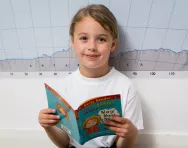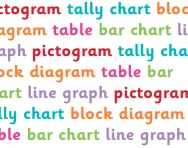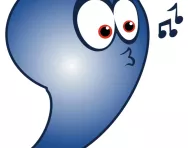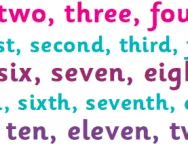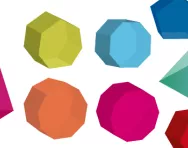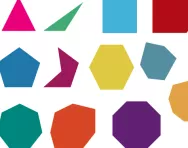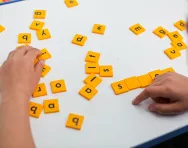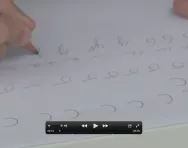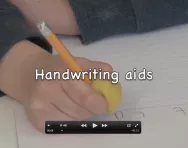Spelling in Year 2
A parents' overview of Year 2 spelling patterns, with examples of the words children are taught at the end of KS1 and Year 2 spelling worksheets to help them practise.
What is a syllable?
Syllables explained for parents, including details of how primary-school children are taught to identify syllables to help them with spelling and reading and understanding poetry.
Should you take your child to parents’ evening?
Does bringing your child to a parent-teacher meeting give them valuable input or get in the way of frank conversation? We discuss the pros, cons and practicalities.
The science of school reading schemes
Following a reading scheme at school can transform children from non-readers to bookworms in a surprisingly short space of time, but how are they developed and tested to help your child progress?
How to handle a disappointing parents' evening
No one likes to hear bad news at a parent-teacher meeting, but knowing how to respond could help your child turn the issue around. By Lucy Dimbylow.
What is an independent school?
Considering sending your child to a private school? We give you the lowdown on the independent education sector.
Common phonics problems sorted
Finding the thought of phonics daunting and wondering how you can support your child in learning to read when you're not really sure how they're being taught in the first place? Reception teacher Niki Jackson shares her phonics tips and advice for parents, highlighting some of the common phonics problems children experience and effective strategies to overcome them.
Teachers' tricks for phonics
Understand more about how children learn about sounds and try some of teacher Niki Jackson's practical tips to help your child with their early phonics learning at home. We particularly like the alphabet cookies suggestion...
How early readers can help your child love books
What do you do when your child is ready for more than school books, but not yet up to full novels? We explain how ‘early readers’ can fill the void. By Lucy Dimbylow.
Primary education in England, Wales, Scotland and N Ireland
We may be a United Kingdom, but schooling varies between each of our four countries. Our guide gives you an overview of the differences in primary school education in England, Wales, Scotland and Northern Ireland.
How being bilingual affects your child’s education
One in five primary school children speaks a language other than English at home. We find out how this affects their learning, and what schools (and parents!) can do to help.
What is data handling?
From pictograms to line graphs, children learn a lot about collecting, organising and presenting data in primary school maths. We explain how data handling is taught in KS1 and KS2 and how you can help your child get to grips with basic statistics at home.
What are nets of shapes?
Can you make a 3D shape from its net? We explain how nets are used in the primary classroom to help children learn more about three-dimensional shapes and their properties in a hands-on, constructive way.
What is a fable?
Fables tell us a story and teach us a lesson at the same time and we've been hearing them, retelling them and writing them for over two thousand years. We explain how primary-school children learn about fables and Aesop in our guide for parents.
What is a traditional tale?
Traditional tales like Cinderella, Little Red Riding Hood and Goldilocks play an important part in early literacy. We explain how these well-known stories are used to help develop reading comprehension and early writing skills, and explain how you can help your child's learning with fairy tales at home.
Supporting your child at primary school if English isn’t your first language
Many parents find helping with school work challenging, and it can be even harder if you're not a native English speaker. So how can you help your child to do their best?
Best coding toys for children
Turn screen time into a super-powered learning experience with a new generation of coding toys. Your child will learn programming skills as they play, as well as the basics of computational thinking (and hopefully how to fix your IT problems, too!). We asked programmer, tech-expert and mum, Claire Wardle, as well as other parents, to put the toys to the test and share their findings.
Best chemistry sets for children
Introduce your child to the world of chemical reactions, crystallisation and chromatography with the right chemistry set for every age and stage. From pre-schooler test tubes and safety goggles to pipettes of luminol and alcohol burners, we've picked great kids' chemistry sets for every budget and every budding chemist.
Best electronics sets for children
Learning how circuits work is an important part of Key Stage 2 science. Make the learning light up, buzz, ring and whizz up into the air with these brilliant electronics sets for children, designed to make exploring electricity creative and captivating. From sturdy sets suitable for small fingers to circuit-diagram projects, these sets offer a fantastic hands-on electrical education.
What are contracted words or contractions?
Contracted words or contractions are used every day in spoken and written English. Help your child keep them straight with our parents' guide, including complete listings of the common contractions children learn to spell in Year 2 and throughout Key Stage 2.
What is an apostrophe?
Children are first introduced to apostrophes in Year 2. Help them practise punctuating correctly at home with our simple revision tips, covering the use of apostrophes for possession and omission.
What are cardinal and ordinal numbers?
Reception and KS1 children all learn cardinal and ordinal numbers. We explain how your child will be taught to count and sequence numbers correctly and suggest practical, fun activities you can try at home to support your child's early mathematical learning.
What are prisms and pyramids?
Prisms and pyramids explained for parents, including practical ways children work with 3D shapes in the classroom and learn about their properties.
What is a polygon?
Can you tell your hexagons from your heptagons? Your octagons from your decagons? With the help of educational experts, we explain how polygons are taught in primary school, with examples of regular and irregular versions of each multi-sided shape.
Best word games for children
Expand vocabulary, develop spelling skills, learn about homophones, anagrams and synonyms and compose huge numbers of silly sentences... all while having a great time. Whether your child is 3 or 13, our favourite word board games and literacy card games offer fast-paced fun for the whole family.
14 of the best new books for children for Christmas 2014
You'll be spoilt for choice choosing new books for 4-11 year olds this Christmas. As well as the blockbusters in every bookshop window (welcome back Wimpy Kid, Percy Jackson and Ruby Redfort!), we've fallen for this bumper crop of great reads, from picture books to read out loud to scare stories to shiver under the covers with. Whatever your child's reading ability, these stories are unmissable. Happy reading!
Best educational magazines for children
Looking for a fun- AND fact-packed publication for your child? The selection we've picked offer puzzles, original artwork, fiction, science projects to complete, history, hands-on making and more – and there isn't a plastic cover-mount in sight. Want to encourage your primary-school child to read regularly? Keep them supplied with new issues!
Museums reviewed by parents: Roald Dahl Museum and Story Centre
Make the most of family outings by choosing one of our parent-recommended museums. For fun, story-telling, literary inspiration and creative opportunities visit the Roald Dahl Museum and Story Centre.
No-sew mathematical costumes for Maths Week
A Maths Week costume?!? Don’t get your numbers in a twist! Non-crafty mum Phoebe Doyle’s on hand with some no-sew, no-stress ideas.
Handwriting aids: pencil grips
Does your child struggle to hold their pencil correctly? Handwriting tutor Michelle van Rooyen explains how a pencil grip could help with their handwriting.
Handwriting aids: pens and pencils
With a return to greater emphasis on handwriting in primary schools, could a special pen or pencil help your child master the art of neat writing? Handwriting tutor Michelle van Rooyen explains what handwriting pencils and pens are available.
5 great reasons to become a school governor
Want to directly influence your child's school experience? Jackie Cutchey explains why becoming a parent governor benefits you, your child and their school.
UK museum highlights for children
A visit to a museum or gallery can really help a subject come to life for a child. Who doesn’t remember the first time they saw a dinosaur? Or an ancient Egyptian mummy? To help you navigate the wonderful world of museums the experts at Show Me have put together a guide to some of the UK's best family-friendly places to visit in person and online.
Video: Correct letter formation
Your child will be taught how to form the different letters of the alphabet differently, according to the ‘movement groups’ they fit into. Our explanatory video shows you how to form all letters (Long ladder, Curly caterpillar, One-armed robot and Z for Zig-zag monster) correctly, stroke by stroke.
Video: Letter formation, Zig-zag monster letter family
Help your child form each letter of the alphabet correctly with our step-by-step and stroke-by-stroke videos, with experts from the National Handwriting Association. In this video we look at the Zig-zag monster letter family: z, x, v, w, y and k.
Video: Letter formation, One-armed robot letter family
Help your child form each letter of the alphabet correctly with our step-by-step and stroke-by-stroke videos, with experts from the National Handwriting Association. In this video we look at the One-armed robot letter family: r, n, m, h, b, k and p.
Video: Letter formation, Curly caterpillar letter family
Help your child form each letter of the alphabet correctly with our step-by-step and stroke-by-stroke videos, with experts from the National Handwriting Association. Here we look at the Curly caterpillar family: c, a, d, g, q, o, e, s and f.
Video: Letter formation, Long ladder letter family
Help your child form each letter of the alphabet correctly with our stroke-by-stroke videos, with experts from the National Handwriting Association. In this video we look at the Long ladder letter family: l, i, u, t and y.
Video: Handwriting letter families
The letters of the alphabet can be divided into ‘movement groups’, based on the movement made to start writing the letter. Each group has a lead letter (L for Long ladder letters, C for Curly caterpillar letters, R for One-armed robot letters and Z for Zig-zag monster letters) and our handwriting advice video outlines the different letter families and how to practise writing them.
Video: Handwriting aids for children
Could a writing slope or an adaptive grip help improve your child's handwriting? Occupational Paediatric Therapist Catherine Elsey explains how to use commercially available handwriting aids in our handwriting advice video.






